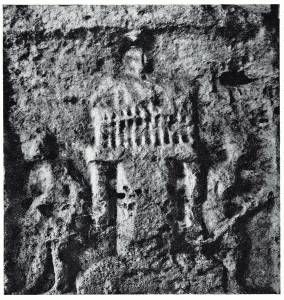After just three days of class, I have learned much more about the 8th-century organ builder Georgios than I ever could’ve dreamed. After selecting a map to remake about the diffusion of the organ between the 1st and 15th centuries in Europe I have started to understand how the organs I see at St. Olaf College are extremely distant relatives of small portable hydraulic machines1, possibly invented in Alexandria in the 3rd century. While flipping through pages describing the intricacies of organ design, I discovered Georgios, a Venetian monk that may have been a key player in the adaptation of organs in France during the rule of Louis the Pious.2Despite my desire to abandon mapping early occurrences of the organ in France, and somehow instead map the possible journey of Georgius, I had to ultimately make the choice to use data that was more based on clear information from the sources I used.

Perrot, Jean. The Organ, from Its Invention in the Hellenistic Period to the End of the Thirteenth Century. London, New York: Oxford University Press, 1971.
This was my first exercise in making decisions at the intersection of the Humanities-centered research I’m more familiar with and mapping. While I was curious about what Georgios’ travels, education, and subsequent work could show about the transition of the organ from being a secular device to an important musical component of Christian services, I recognized that plotting unsubstantiated dates and locations would not provide any helpful information. All map making is built to some degree on lies3 that dictate the parameters of that map, or what the map maker is trying to illustrate. The severity and intent of those lies can vary, but I’ve learned that there are no maps that show absolute truth. That being said, uncertainty4 is a component of map making that should be openly explored and illustrated as best as possible. My map of early organs in France is full of uncertainty about many of my data points, but it is uncertainty that I can do my best to explain and is rooted in multiple sources that I trust. Becoming comfortable with making these choices about what to prioritize in future maps I make will be difficult, but hopefully somewhat relieved by doing my best to show why I made those decisions which I can show in reference materials outside of the maps themselves.
1Perrot, Jean. The Organ, from Its Invention in the Hellenistic Period to the End of the Thirteenth Century. London, New York: Oxford University Press, 1971
2 Williams, Peter. A New History of the Organ from the Greeks to the Present Day. Bloomington: Indiana University Press, 1980.
3Monmonier, Mark. 1996. “Introduction” and “Maps for Political Propaganda.” In How to Lie with Maps, 1-4 and 87-112. Chicago: University of Chicago Press.
4 Sinton, Diana. 2017. “Critical Spatial Thinking,” The International Encyclopedia of Geography, ed. Douglas Richardson, Noel Castree, Michael F. Goodchild, Audrey Kobayashi, Weidong Liu, and Richard A. Marston, 2-9. Hoboken: Wiley & Sons.
You do a great job of integrating class readings and your own research into this reflection on the ways our map-making instincts or desires can be constrained by the resources at our disposal. It isn’t always easy to make peace with doing what’s possible rather than what seems best, but it’s certainly a good life skill to practice. :)
I also like that you included an image, but now I’m curious to know what it shows and how it connects to your decision about what you could and could not map. Going forward I suggest continuing to use media in your posts, but as integrated parts of your argument or discussion rather than merely as eye candy.